Japan's Open Air Folk House Museum: Fascinating, Photogenic, Foreigner-Friendly

The Japan Open-Air Folk House Museum (Nihon Minkaen) just outside Tokyo is 30,000 square meter facility within a larger nature park. Historian and author Mark Schreiber leads an unhurried stroll down country lanes and through its 22 traditional farmhouses from around the country, with no modern conveniences anywhere in sight.
By Mark SchreiberGetting In
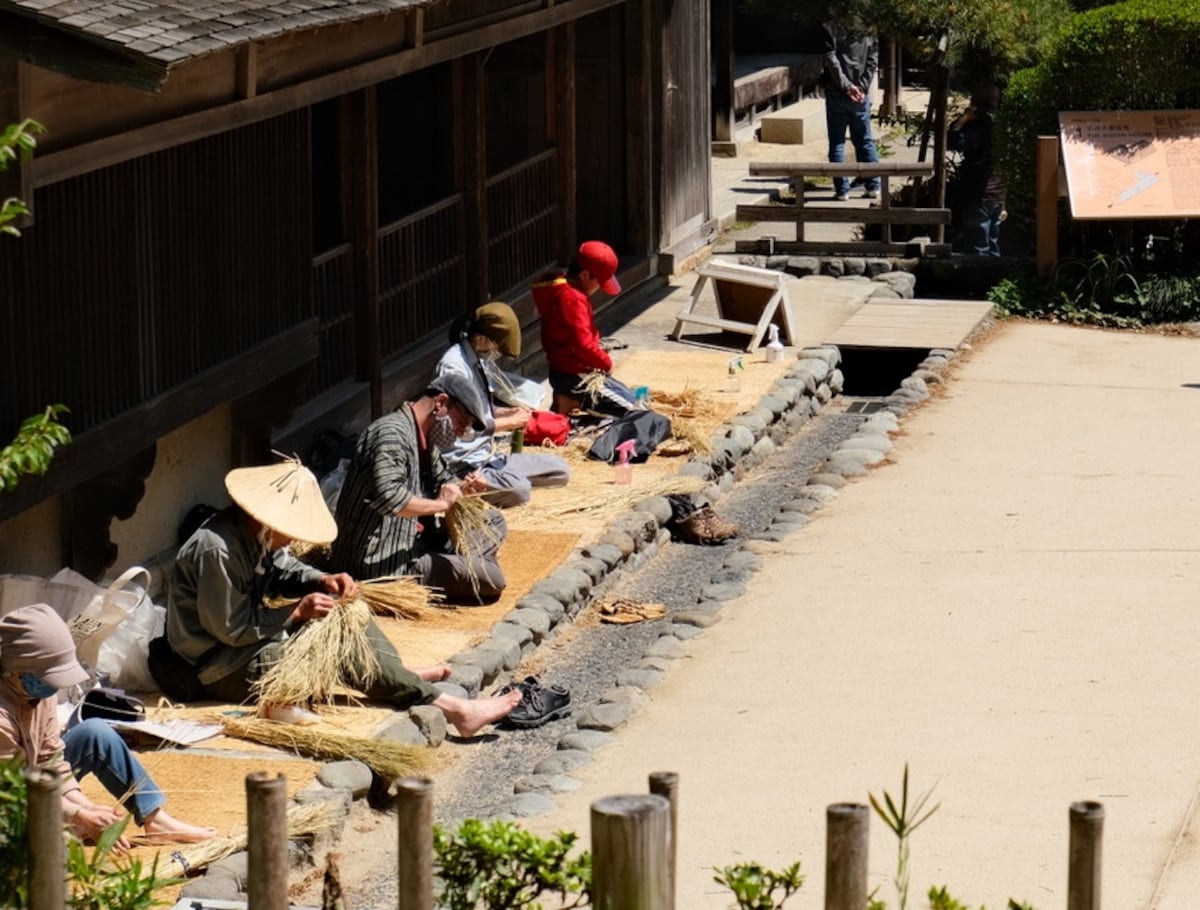
Local volunteers help keep the museum "alive," here demonstrating the traditional skill of weaving straw sandals.
The museum is located in Kawasaki, and is easily accessible from central Tokyo via the Odakyu commuter line (about 40 minutes from Shinjuku Station). In addition to being wonderfully photogenic, it offers a spotlessly maintained, all-season setting. And it's foreigner friendly, with plenty of English guideposts, explanatory panels and printed materials.
If you enter the museum through its west gate, which is recommended, most of the walk will follow a downhill slope. If you enter through the front gate, however, the walk, while not particularly strenuous, will be mostly uphill. The order presented here is via the west gate.
The Lay of the Land
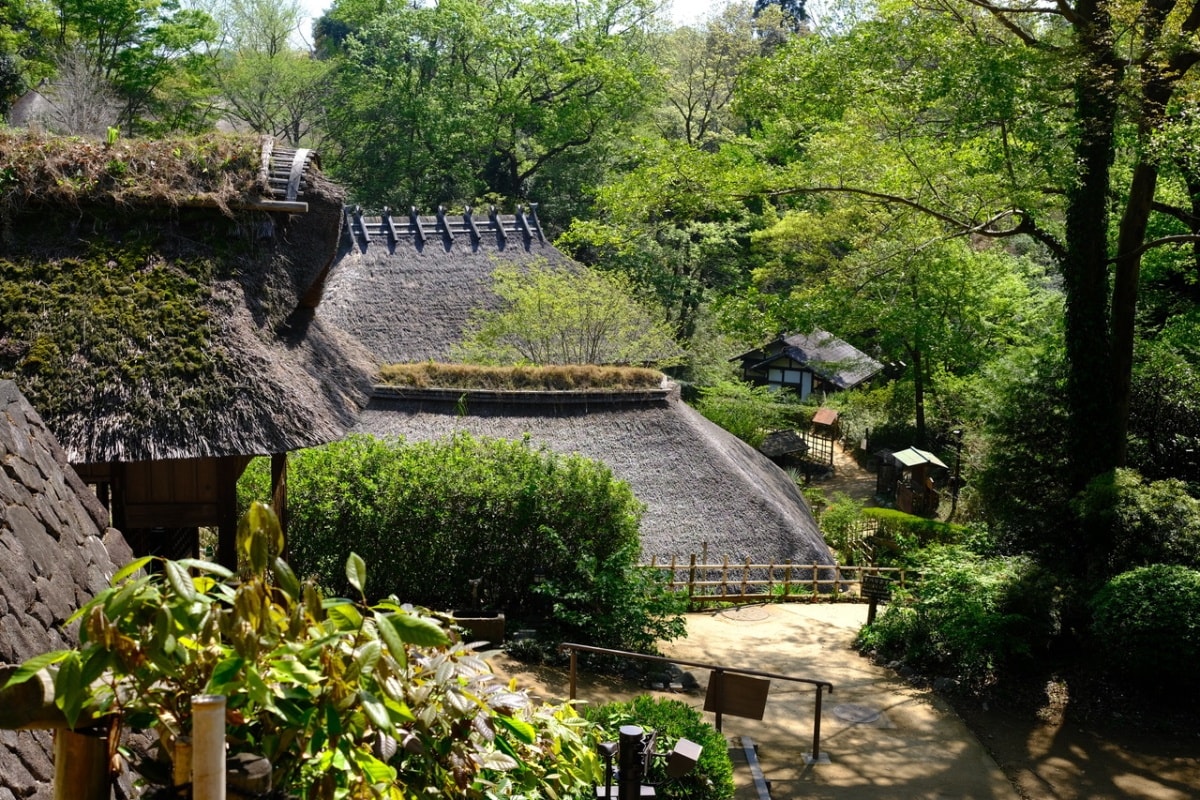
No neon signs, no wires and no cars. The houses are scattered throughout the park, almost as if part of an existing village.
When it opened in April 1967, the museum consisted of only three houses: the Ito House, the Kiyomiya House and the Nohara House. Over the next 25 years more houses from around the country were acquired, dismantled and rebuilt at their present location.
The museum's five "villages" are arranged in clusters that follow the lay of the land, so that each new bend in the trail opens up to a separate section. Featured houses include the Kanagawa region (of which Kawasaki is part); Tohoku (northeast Japan) region; Kanto (Tokyo and environs) region; Shin-Etsu (Japan Alps and Sea of Japan) region; and a Post Town, with buildings that acted as rest facilities for travelers.
The inhabitants of these houses lived under widely diverse climate conditions. Some lived in mountainous areas where snow fell heavily in the winter; others were from the plains or adjacent to the sea. Their construction of their homes, and the implements on display therein—ranging from farming tools to fishnets—eloquently convey humanity's never-ending quest to adapt to the surroundings.
Yes, You Can Go Inside
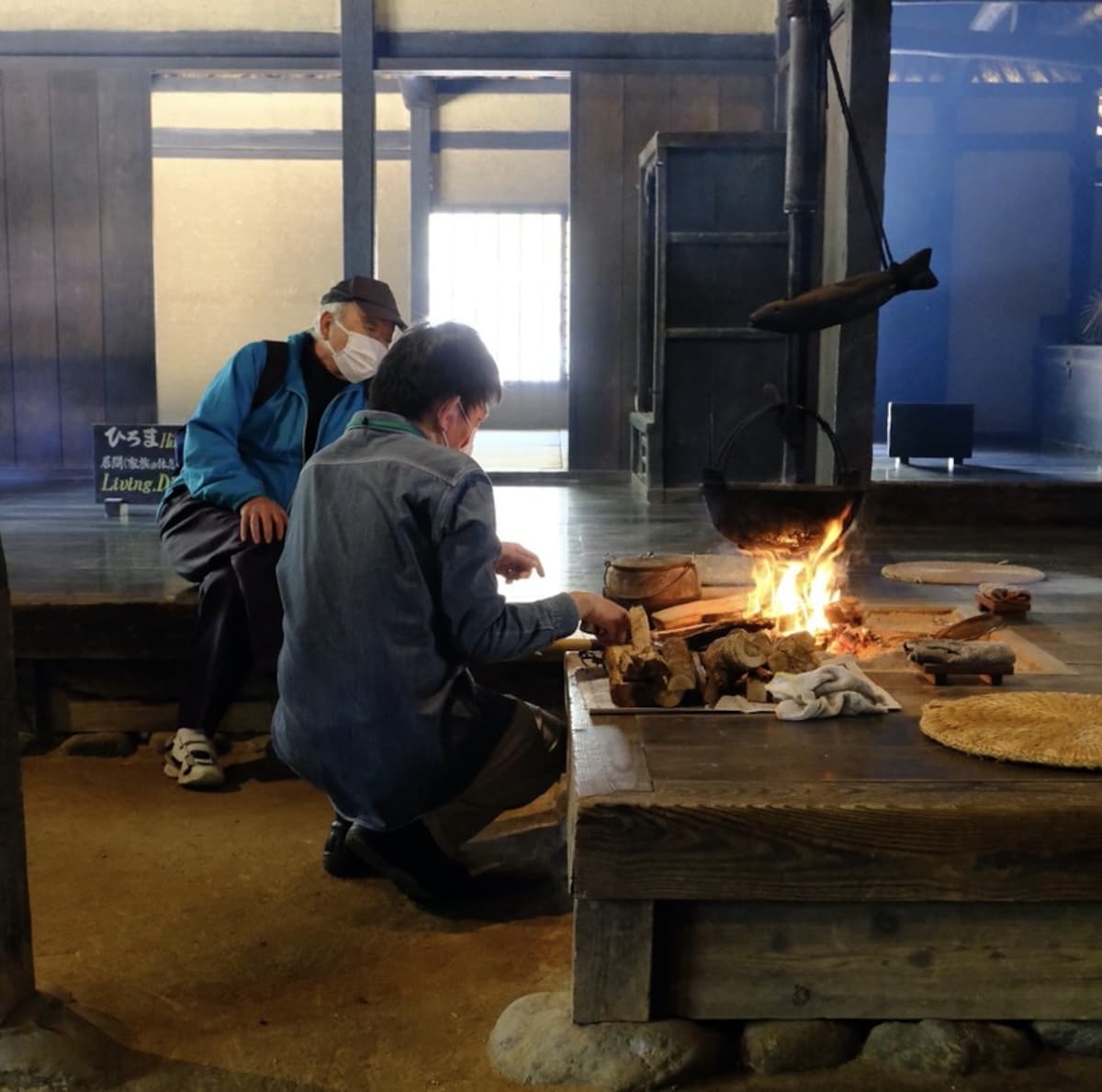
A volunteer guide tends a traditional hearth inside one of the houses. The smoke was also helpful in keeping biting insects at bay. Note the stone foundation on which the house sits.
The interiors of many of the houses are open, and friendly volunteer guides may be present to greet visitors and field questions. As we sat cross-legged beside one house's smoldering irori (hearth), one explained to me, "It was left burning all the time, because the smoke also served to repel mosquitos during the summer months."
People in the pre-modern era struggled to maintain self-sufficiency. In addition to farming and fishing, many rural households supplemented their income by producing goods for sale or barter. Several of the homes display hand looms that were once worked by female members of the household, and in several of the houses, female volunteers work the shuttles to weave cloth.
Stars of the Show
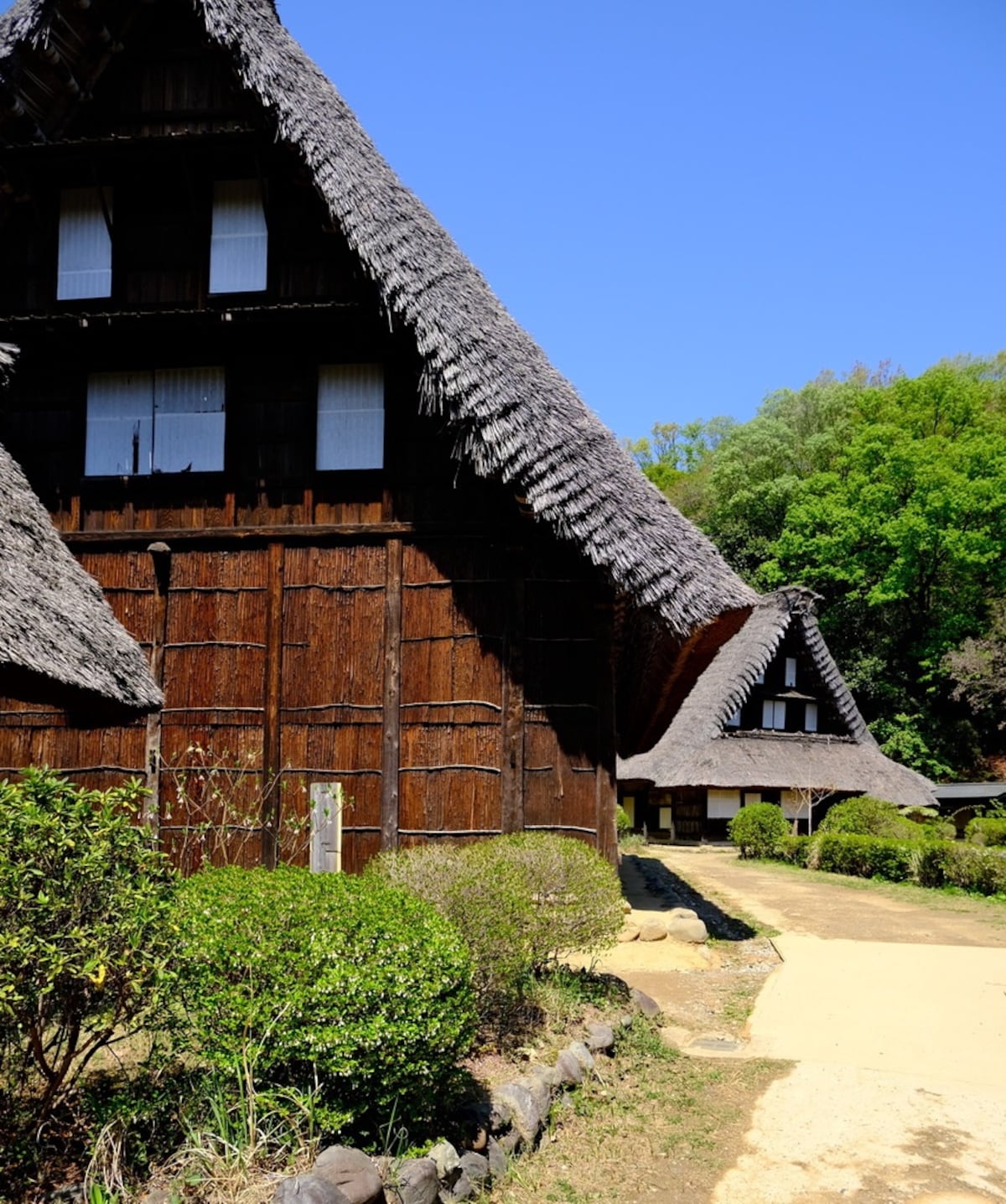
The Shin-Etsu Regional Village features four "gassho-zukuri" houses. The term "gassho" means "praying hands," a reference to the steep roofs meant to keep snow from piling up in the region known for heavy snowfall.
While all the houses here have their own distinctive appeal, the park's top stars are clearly the four houses that make up the Shin-Etsu Regional Village. Built in the gassho-zukuri style—gassho means hands brought together as in prayer—their sharply angled thatched roofs and geometric construction are simply stunning. Robustly secured to the frames with straw rope, the three-story structures demonstrate the meticulous craftsmanship that went into their building.
Praised by UNESCO as "outstanding examples of traditional human settlements that are perfectly adapted to their environment," the villages of Shirakawa-go and Gokayama, in Gifu and Toyama prefectures, were designated World Heritage sites in 1995.
One of the four, the Emukai house from Toyama Prefecture, was built in the early 18th century and has also been designated an important cultural property by the Japanese government. The Yamashita house, an early 19th century domicile from Gifu Prefecture, was originally used to raise silkworms and found a second life as a Japanese-style restaurant before its acquisition by the museum.
In addition to a small buckwheat noodle restaurant inside the Yamashita house, picnic tables are available nearby, as is a vending machine dispensing cold drinks.
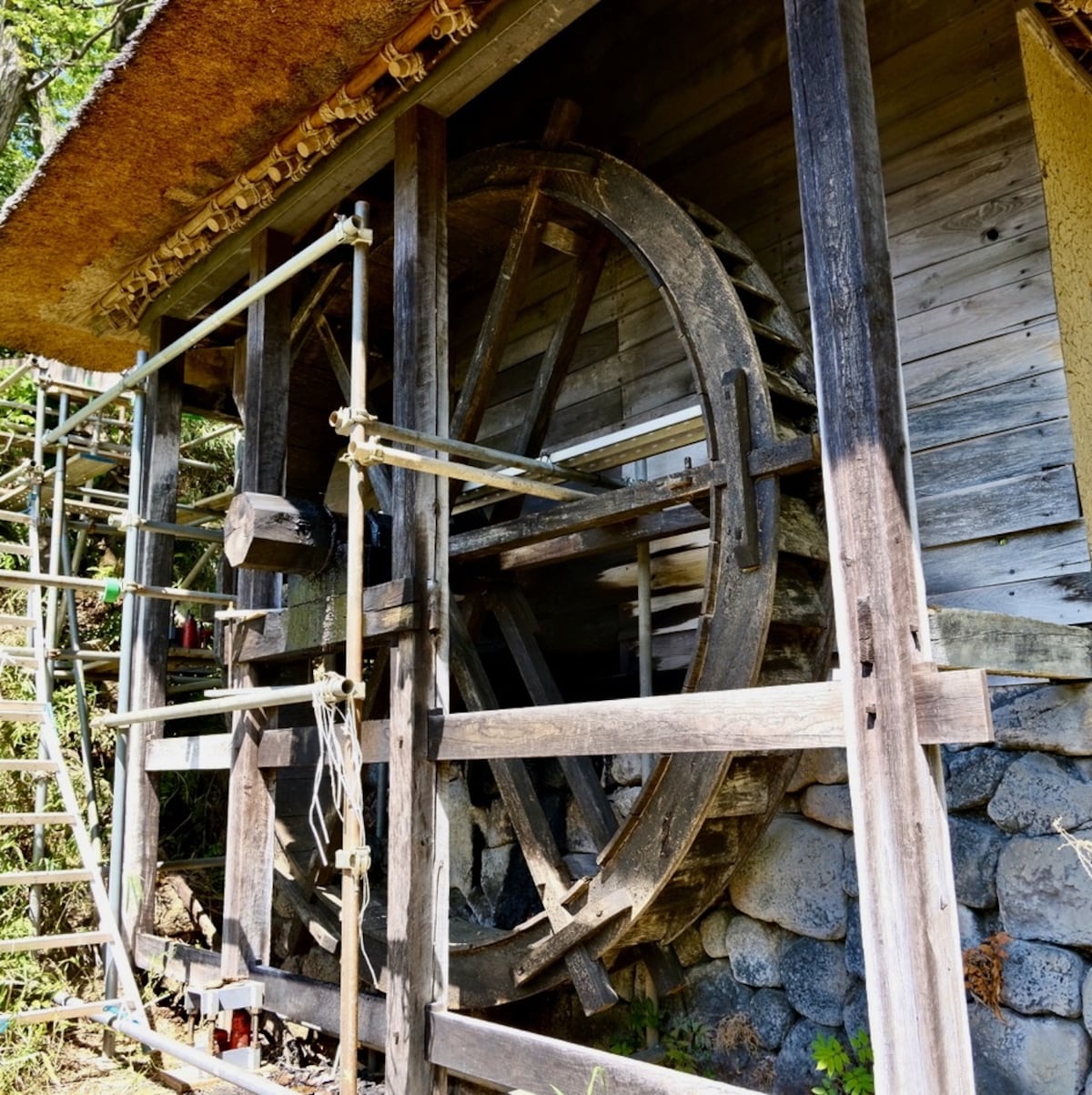
This water mill (presently undergoing restoration work), was brought to the museum from Nagano City. It provided power for grinding flour.
In addition to the dwellings, buildings on display include a hut used by ferry operators who worked along the Tama river in Kawasaki City (early 20th century); the Kokagesan shrine, built to worship the deity of silkworm growers (19th century); and an elevated warehouse on stilts from the Amami archipelago in Kagoshima Prefecture (late 19th century), which was designed to safeguard harvested grains from floods and rodents.
The carpenters who built these minka were true craftsmen, and the fact that these sturdy homes have lasted for two centuries or longer is a testimony to their knowledge of local materials and mastery of building techniques.
At the indoor museum just inside the front gate, you can view displays of carpentry tools and panels that explain the building techniques and materials utilized.
The museum shop sells a 75-page softcover book in English (¥1,020) that introduces the museum's history and explains the traditional construction methods.
Please note: Three old houses and the water wheel are currently undergoing restoration work and will not be fully accessible until September 2023.
There's More!
Time permitting, feel free to stroll through other parts of the verdant Ikuta Ryokuchi Park, including the Taro Okamoto Museum of Art.
Born in Kawasaki and educated at the Sorbonne in France, Okamoto (1911-1996) was one of Japan's best-known avant-garde artists, and famed, among other things, for his enormous "Tower of the Sun" that loomed over the central plaza at the 1970 World Exposition in Suita City, Osaka. (It still stands at the Expo Memorial Park.) Along with the displays, the museum store offers many colorful and exotic gifts.
English web site: https://www.taromuseum.jp/index_english.html
Getting There

This elaborate 19th century chandelier in the Hara House shows how wealthy landowners began to mix traditional design with European-style fixtures.
From Shinjuku, take the Odakyu line to Mukogaoka Yuen Station. From the station's south exit, the front gate to the museum is about 15 minutes on foot or 5 minutes via Kawasaki City Bus to the Ikuta Ryokuchi-guchi bus stop.
To enter via the west gate (recommended), go to the station's north exit and take a taxi or Odakyu Bus number 向10 to Senshu University Ikuta Campus. When you get off at Senshu, keep following the road's S-bend past a golf clubhouse, and you'll soon see bilingual signs directing you to the indigo dyeing workshop that serves as the museum's west gate. Once inside, cross the footbridge and walk past the Kabuki theater, then descend the steps to the Kanagawa Village.
The Open-air Folk House Museum is open from 9:30 a.m. to 5:00 pm. (It closes at 4:30 pm from Nov. through Feb.) It is closed on days following national holidays and on Mondays, except when a Monday falls on a national holiday. Admission is ¥550 for adults, ¥330 for students and seniors over age 65 (ID required) and children under 12. A limited number of wheelchairs and baby strollers are available to visitors.
Telephone: 044-922-2181
English web site: https://www.nihonminkaen.jp/index_english.html
English leaflet download:
https://www.nihonminkaen.jp/pdf/english/nihon_minkaen_english.pdf
More Articles on Historical Sites in and Around Tokyo
The Old Town of Sawara: The Ideal Day Trip from Narita Airport
A Day Trip Exploring Japan's Feudal History in Mito City
A Walk Through Tokyo History: Yotsuya to Shinjuku on the Koshu Kaido Road
Nostalgic Trip to a Beloved Tokyo Neighborhood



